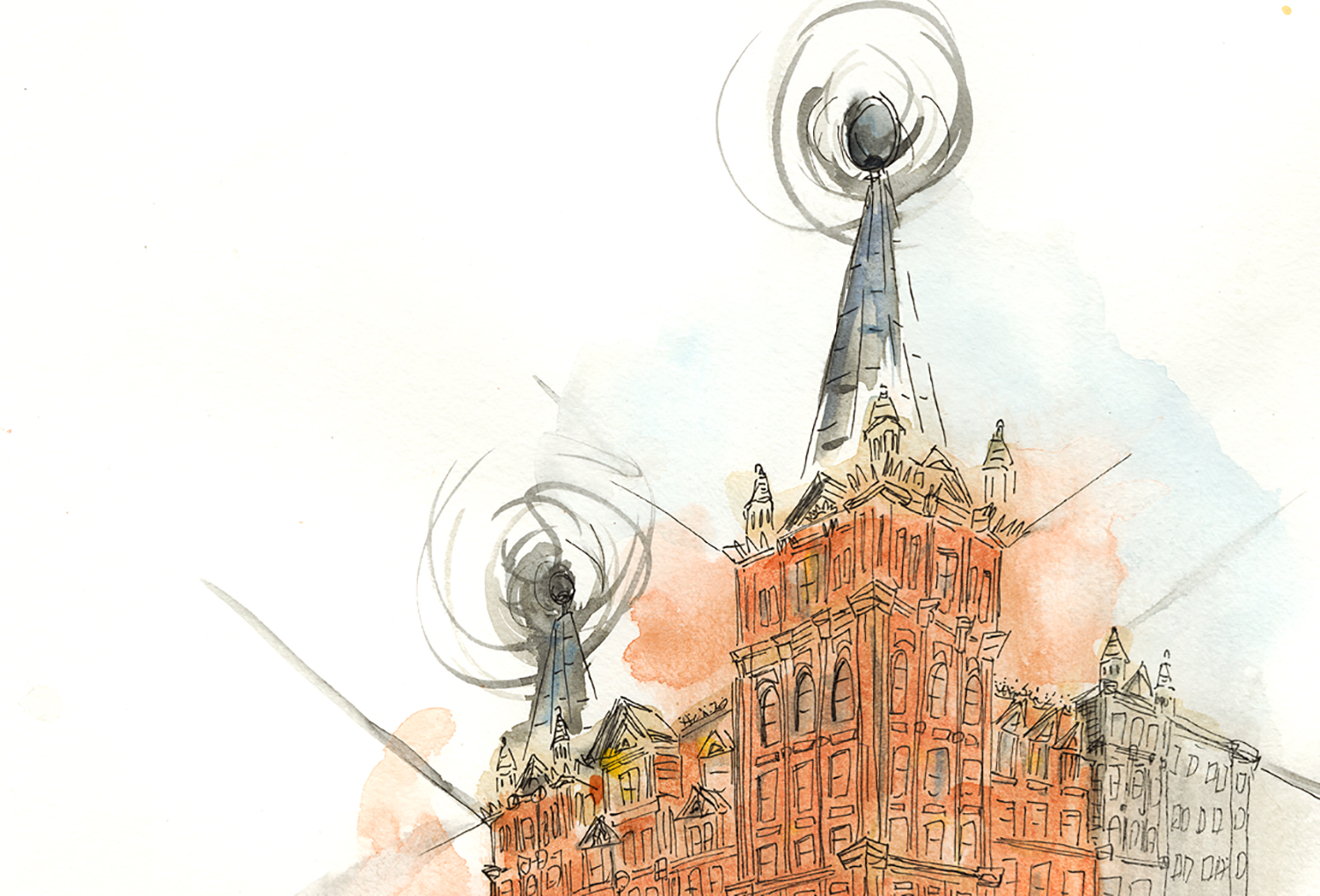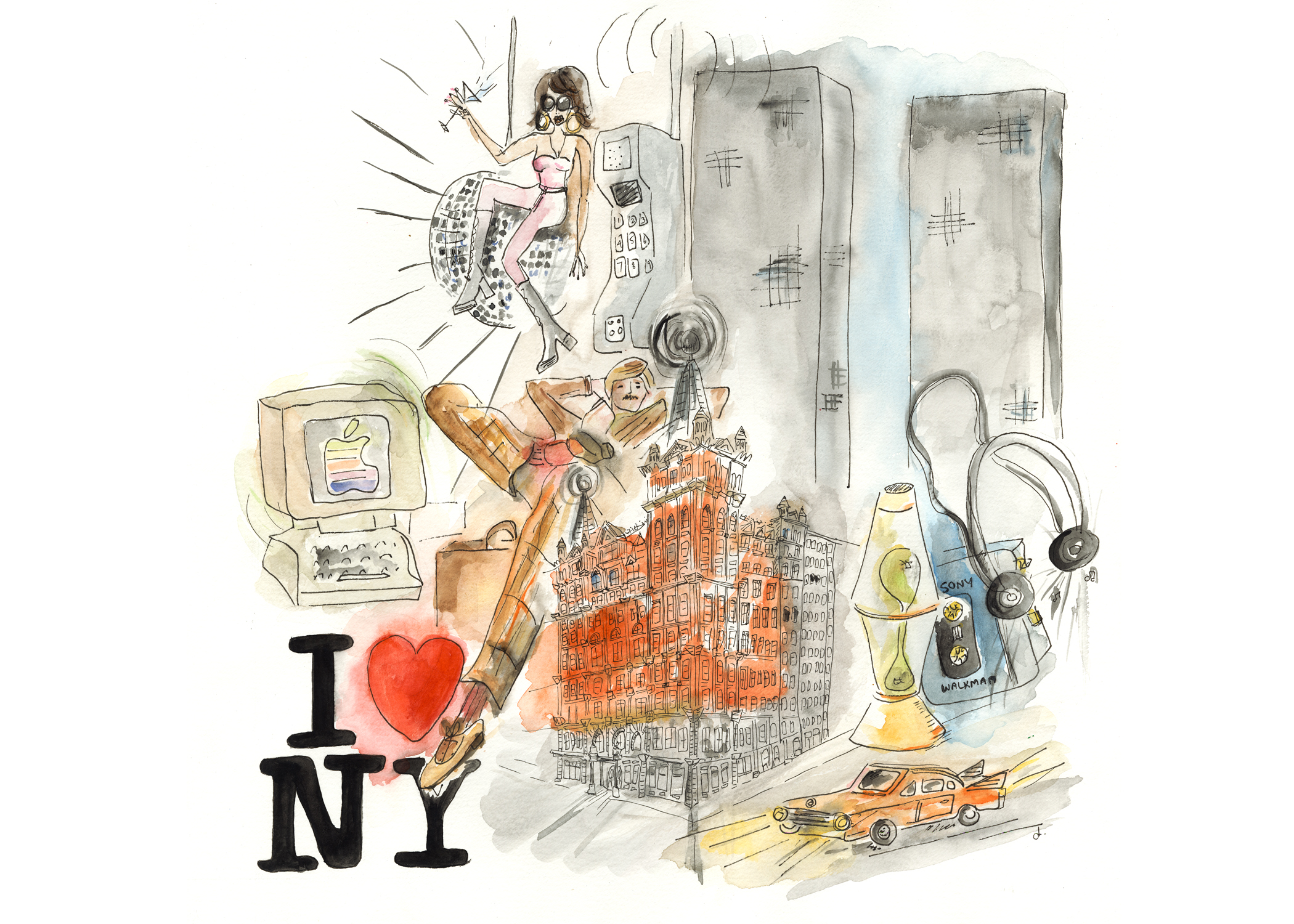THE BEEKMAN HOTEL NYC
•AN ILLUSTRATED HISTORY THE BEEKMAN BUILDING & NEW YORK CITY •
For this project, I collaborated on the opening of The Beekman Hotel in New York. With a rich history as one of NYC’s most prized architectural gems, this 19th century landmark building is the crown jewel of Lower Manhattan’s vibrant “New Downtown.” The Beekman’s unique and colorful history began well before it was constructed in 1883. To celebrate its iconic architectural and design heritage over the last several hundred years, we’re taking you on a sumptuous visual tour. Get ready to step back in time – from past to present.

© ANOUK COLANTONI

© ANOUK COLANTONI

In 1761, the site hosted the first performance of Shakespeare’s Hamlet in New York at the Chapel Street Theatre. Following the Stamp Riot Act, the theatre burned down, and in 1845 a new building, Clinton Hall was established on this site. It served as an educational institution and housed the vast archives of the Mercantile Library Association, a huge library with reading rooms and writing spaces. Edgar Allan Poe published The Broadway Journal here. The foundation of NYU began with their first day of classes held inside this building. © ANOUK COLANTONI

Let’s throw way back to a time when New Yorkers traveled by horse and buggy along newly lit streets with electric light, when the Beekman (then named Temple Court) served as the hub for our city’s elite: attorneys, publishers, and architects. Completed in 1883 (the same year as the Brooklyn Bridge), The Beekman with its famous atrium supported by cast iron dragons, pyramidal skylight, and twin turrets was a sleek vision of innovation. In 1884, the iconic Statue of Liberty is erected to commemorate the lasting friendship between the United States and France—an enduring symbol of newfound freedom and hope. © ANOUK COLANTONI

By the early 1900s, The Beekman (also named Temple Court after the Legal District in London), now a well-established landmark, and one of the tallest buildings in Manhattan, stood grandly against a changing New York. In fact, Temple Court helped pioneer the modern office building today. The first underground line of the NYC subway opened—with the historic City Hall station a stone’s throw away—and one of the city’s tallest buildings, the Flatiron Building, was completed. In 1903, the Yankees became an official team.© ANOUK COLANTONI

Hark back to 1913, the year Vanity Fair was first published, touting stories from the first journalistic impresarios—with cheeky whiffs of insider gossip for those who knew how to read between the lines. Meanwhile, in the bustling area of Lower Manhattan’s South Street Seaport, The Beekman was joined by the freshly completed Woolworth Building.© ANOUK COLANTONI

During prohibition in the 1920s, New York’s late night revelers headed uptown in droves, lured by the captivating jazz playing at speakeasies like Harlem’s Cotton Club. It was a time of economic boom—think Great Gatsby and flapper excess. This swirl of social change, was chronicled, of course, by our paper of record, The New York Times. .© ANOUK COLANTONI

Here come the skyscrapers! The 1930s was an epic time for construction in New York. The beginning of the decade saw the completion of icons such as the Chrysler Building, the Empire State Building, and Radio City Music Hall, which joined The Beekman in an increasingly awe-inspiring skyline. Down on street level, yellow taxis, now synonymous with the Big Apple, become a fixture on every Avenue.© ANOUK COLANTONI

New York Fashion Week made its first runway debut in 1943. The Kiss, a powerful symbolic image of love was taken in Times Square in 1945. As the cloud of World War II lifted, the city became alive with artists, ushering in one of New York’s most creative eras. Musicians like Charlie Parker and Dizzie Gillespie refine the modern jazz sound known as Bebop, and in 1948, the New York City Ballet was founded.© ANOUK COLANTONI

Imagine a time when coquettish Marilyn Monroe, the notorious “Rat Pack”, and the “King of Rock and Roll” Elvis Presley are the biggest stars of the day. Fifties New York is frothing with the ideas and politics of the Beatnik Generation and the first issue of the Village Voice hits the stands.

The 1960s begins with Martin Luther King’s “I Have a Dream” speech and ends with Woodstock and the Apollo 11 moon landing. The biggest musicians of all time, The Beatles, Jimmy Hendrix, and The Rolling Stones, are at their feverish peak, and seas of bee-hives and mini skirts are dancing in the streets.

70s Disco baby. This is Saturday Night Fever all the way, a decade that saw the heyday of Studio 54. Disco ruled and so did skin-tight flares, opalescent white suits, and spandex halter jumpsuits. Blocks away, the Twin Towers were constructed. The Walkman was invented, Apple was founded, and no room was complete without a groovy lava lamp.

The 1980s were defined by pop culture, and the rise and fall of Wall Street. Think Gordon Gekko, big hair, and a “martinis for lunch” mindset. While music icons like Madonna, Michael Jackson, and The Cure could be heard from every boom box, artists like Warhol and Basquiat were taking their art to the streets, starting what would become one of the most influential art movements of the 20th Century.

Sex and the City becomes a global phenomenon, fashion is forever changed, and people flock to the city to drink cosmopolitans and snag cupcakes from Magnolia Bakery. Meanwhile, New York’s hip-hop scene is blazing. The lyrical dexterity of The Notorious B.I.G. and Nas, along with the deep beats of the Wu-Tang Clan, draw the focus away from L.A., and pave the way for the likes of hip hop mogul, Jay-Z. In architectural circles, the historic gem at 5 Beekman Street, now The Beekman, is recognized as a New York City landmark.
















